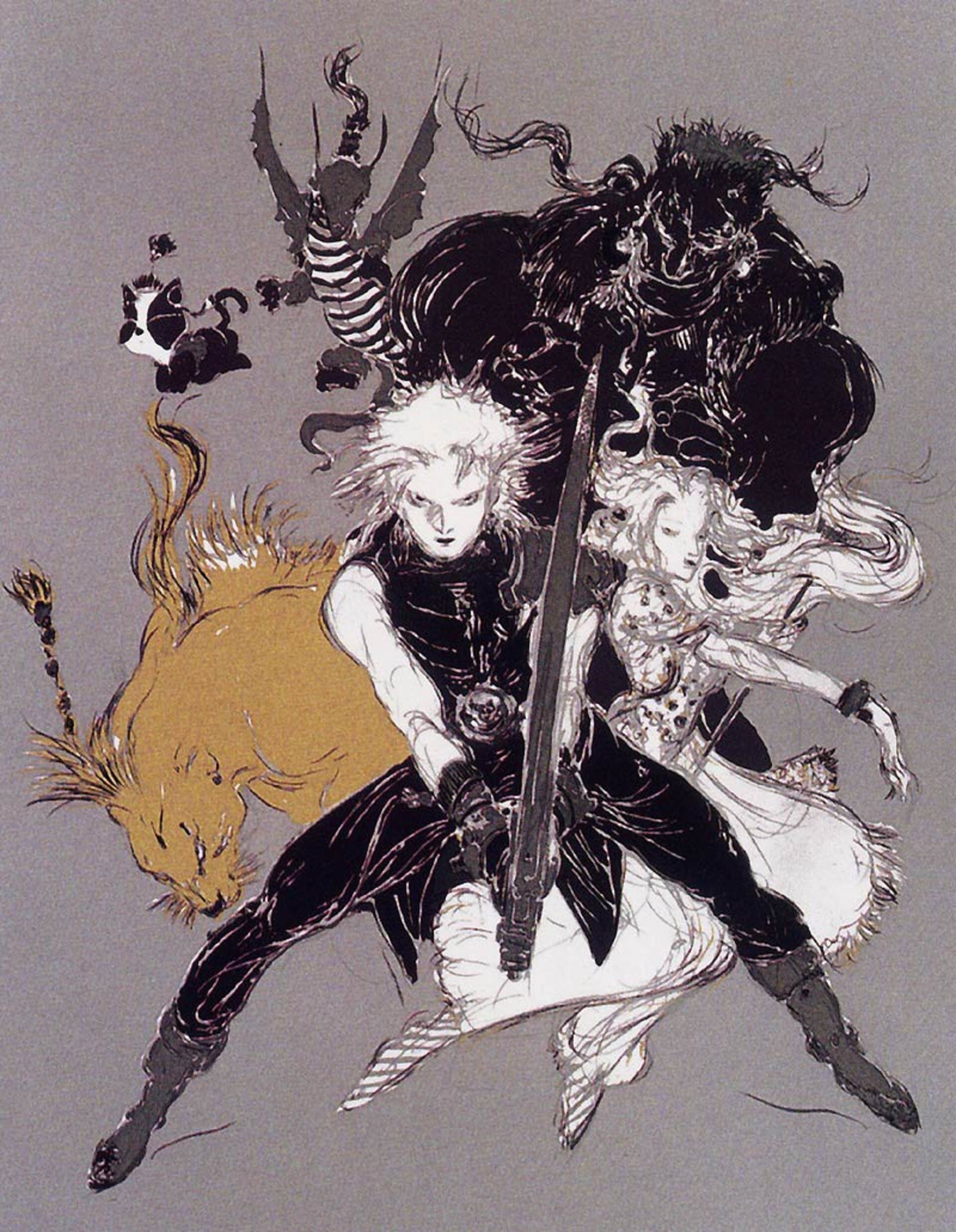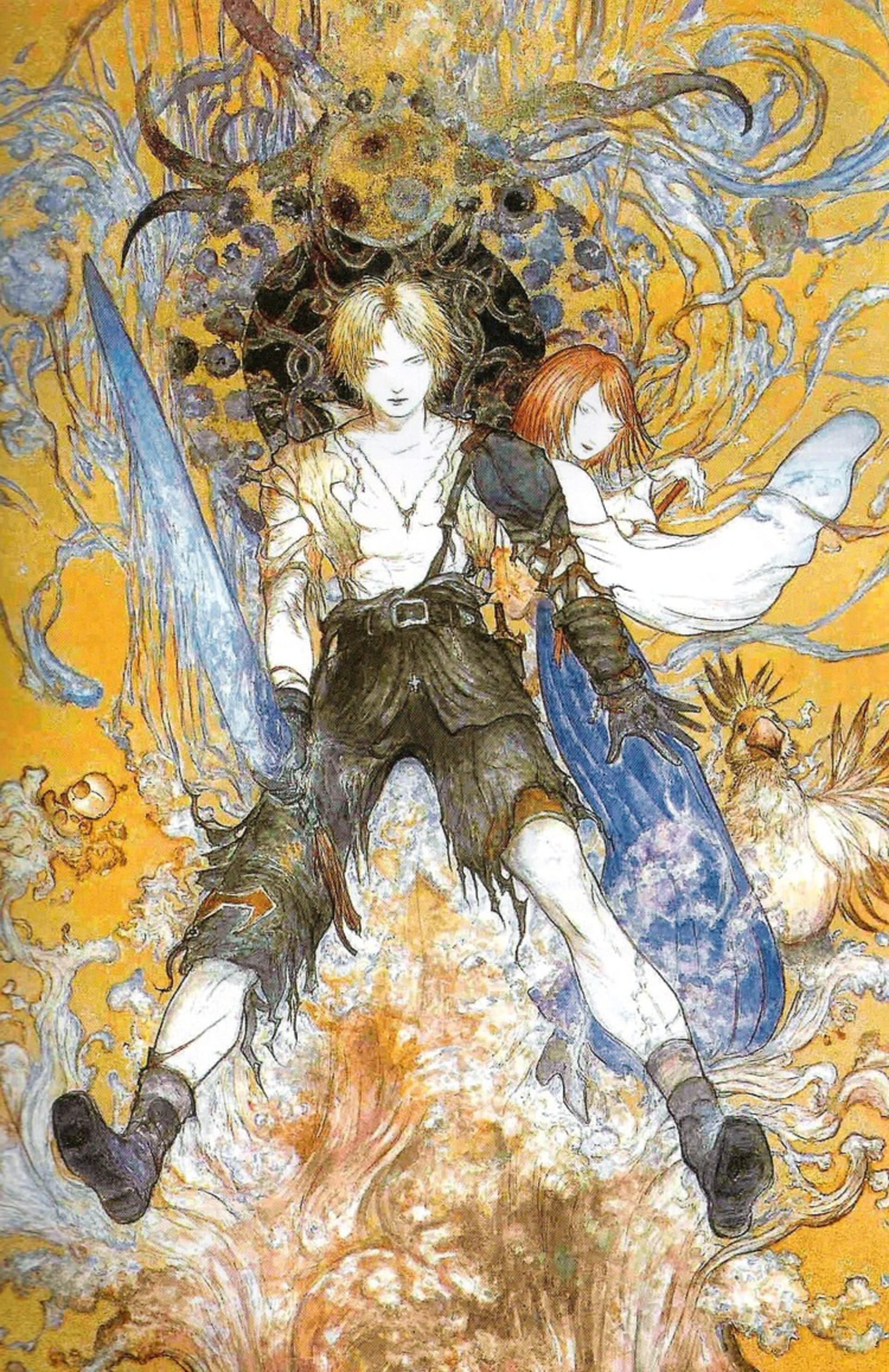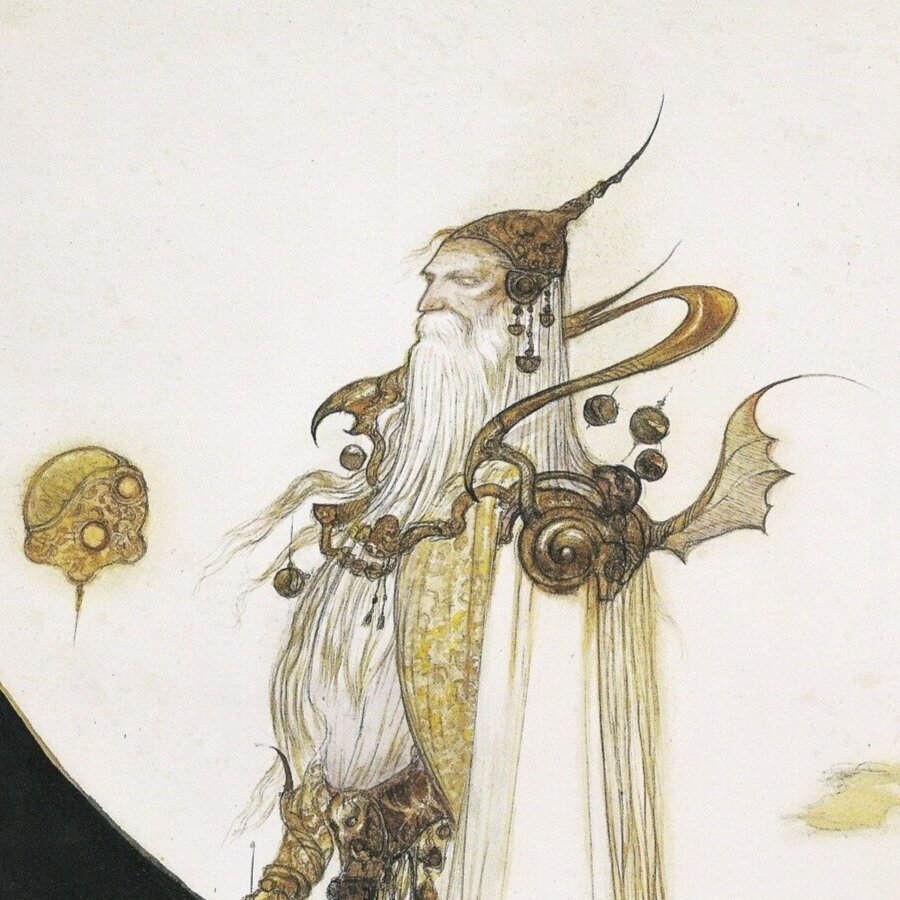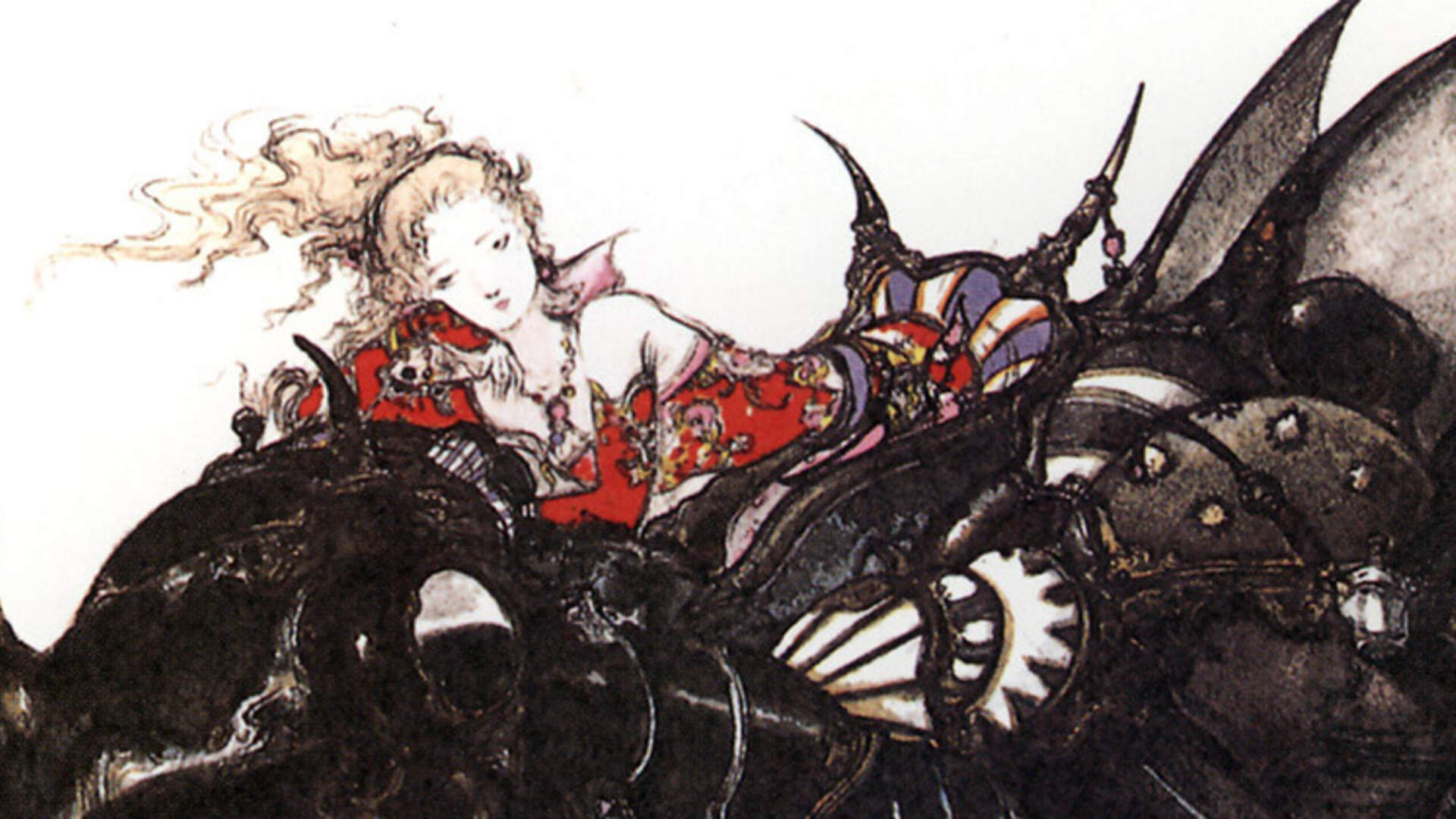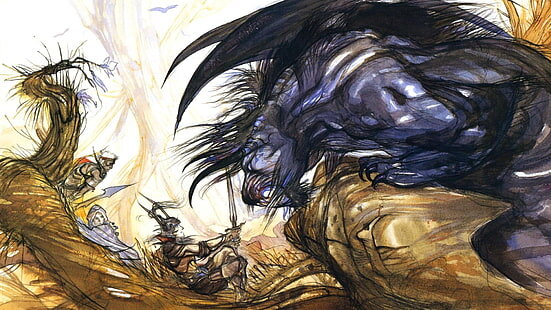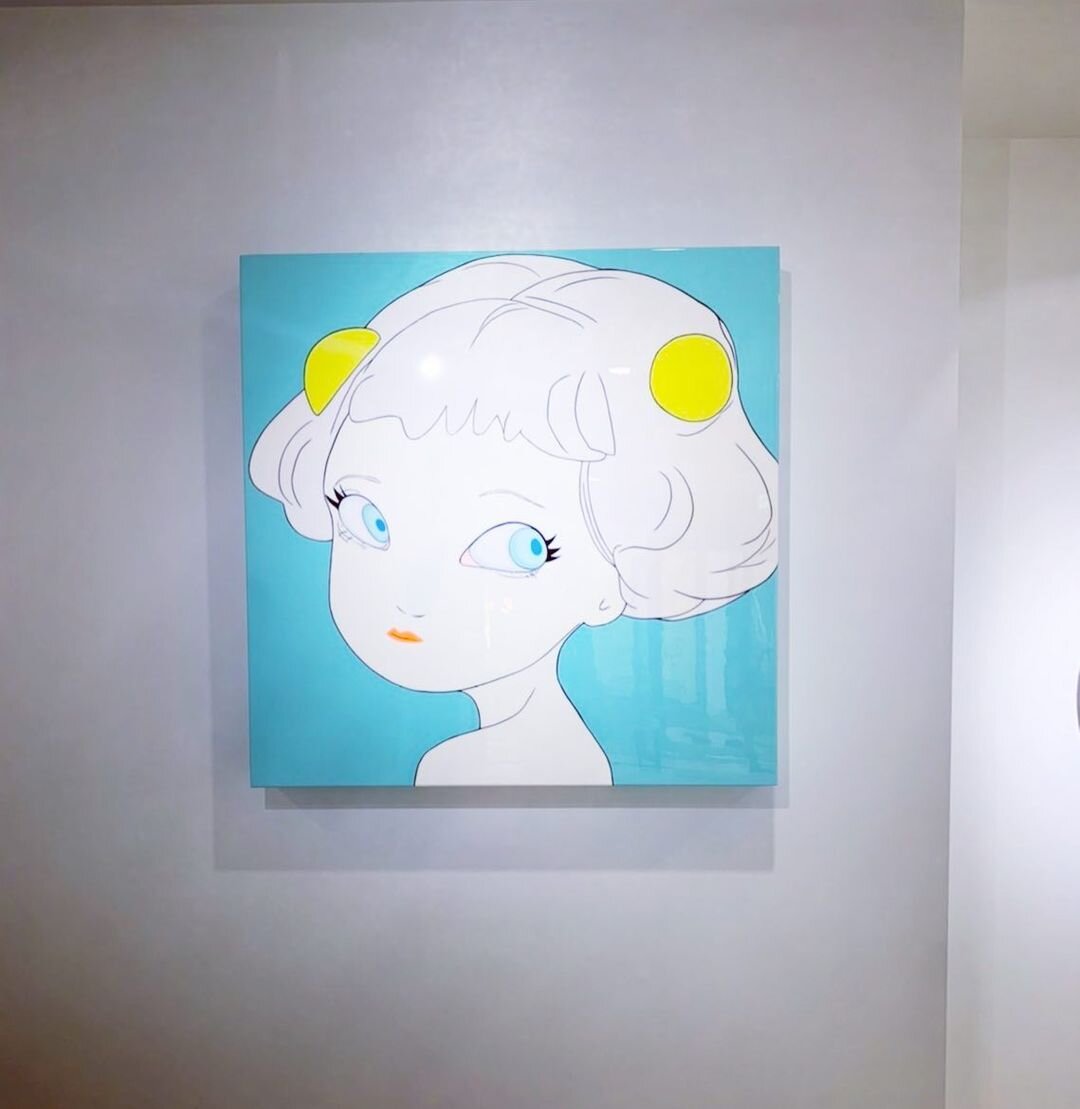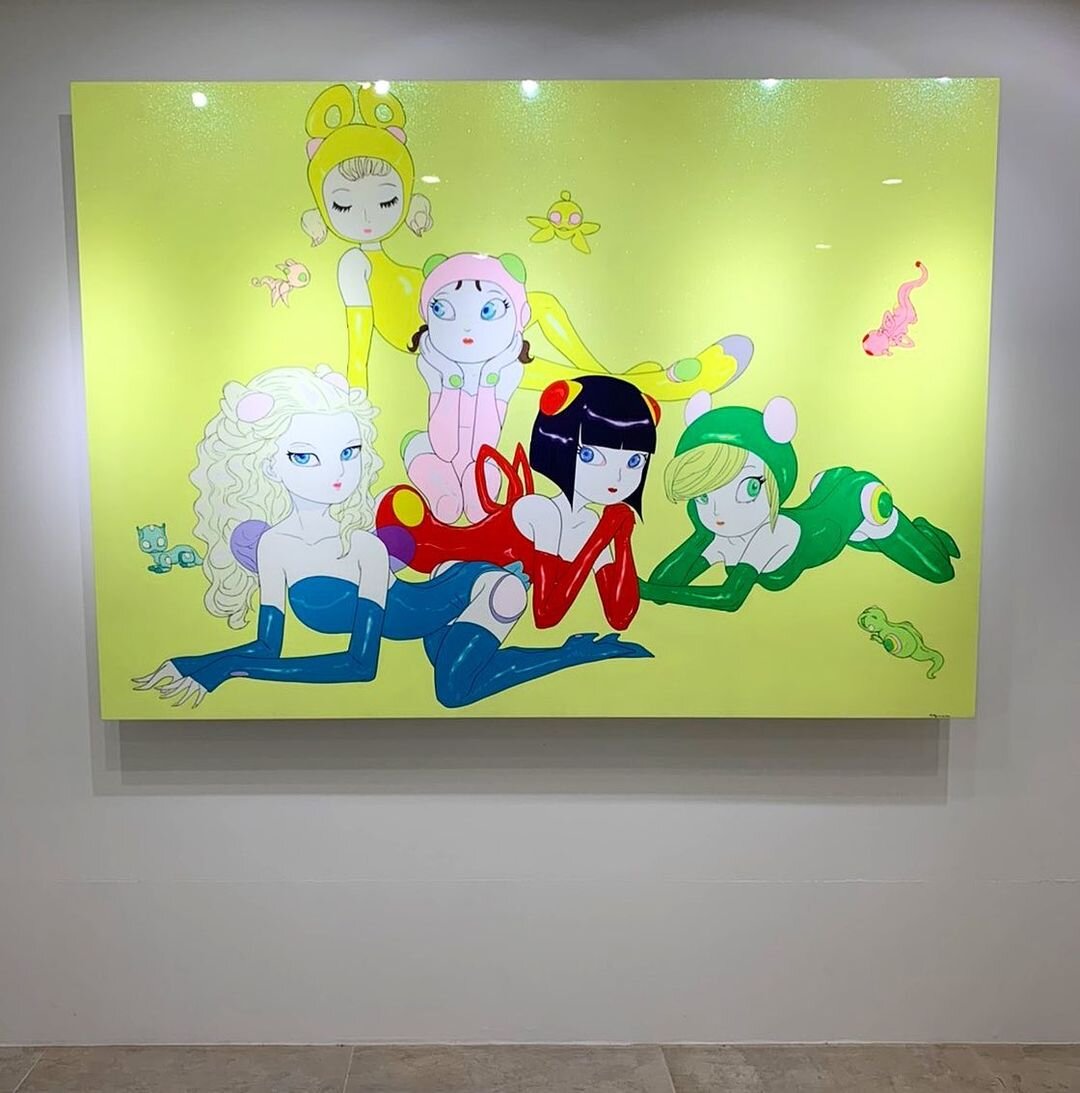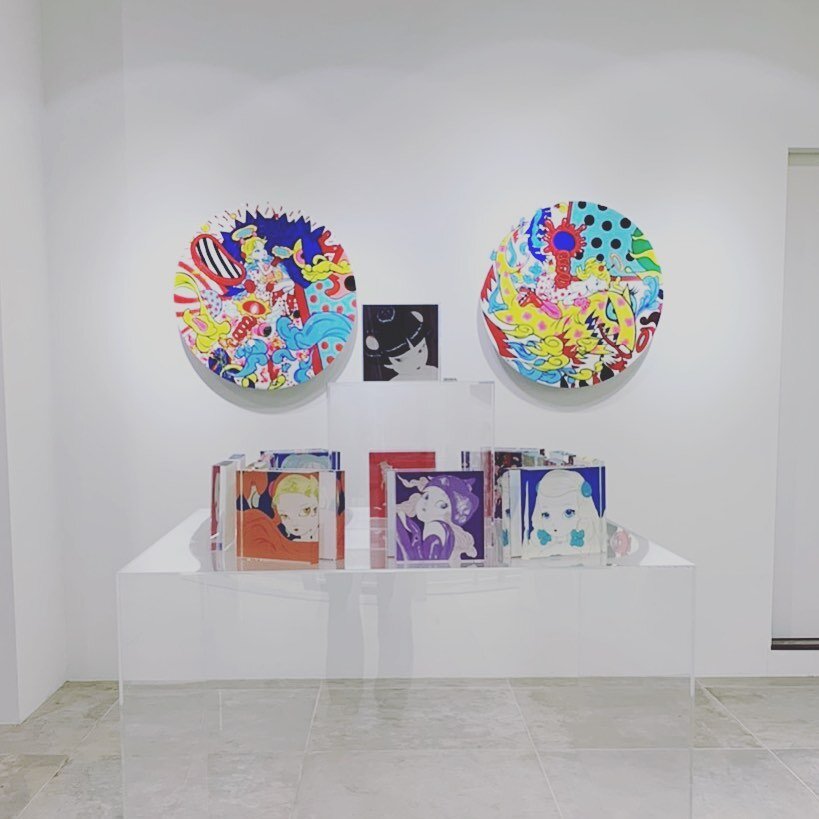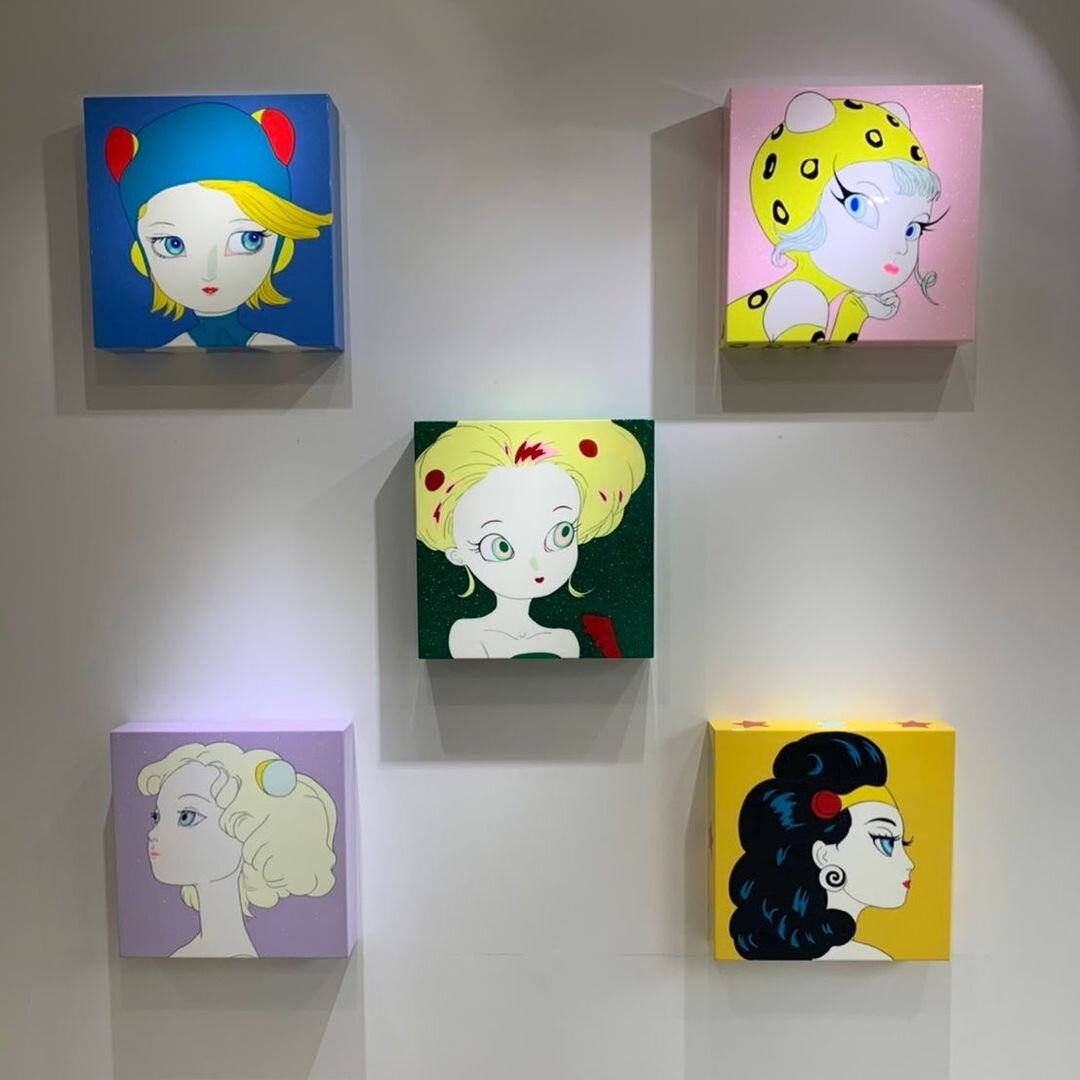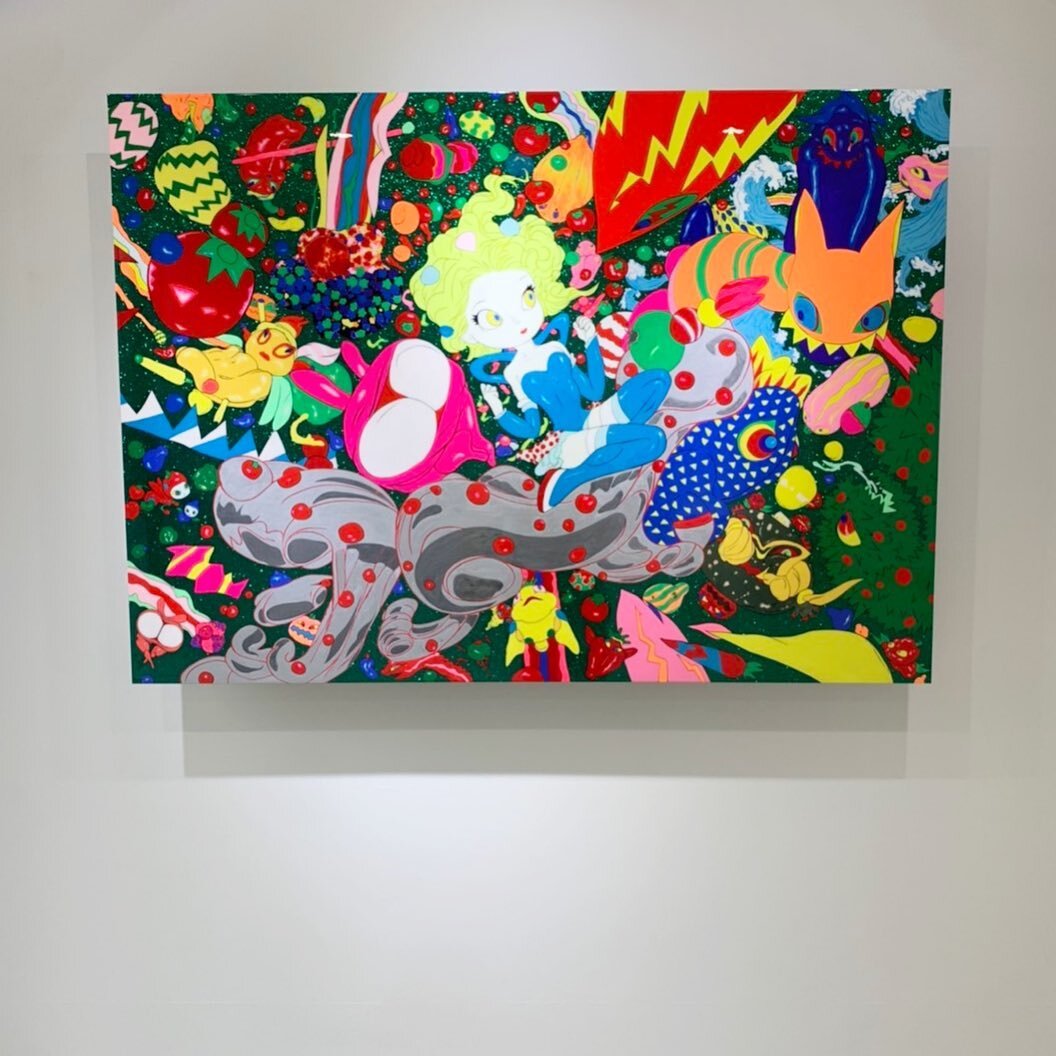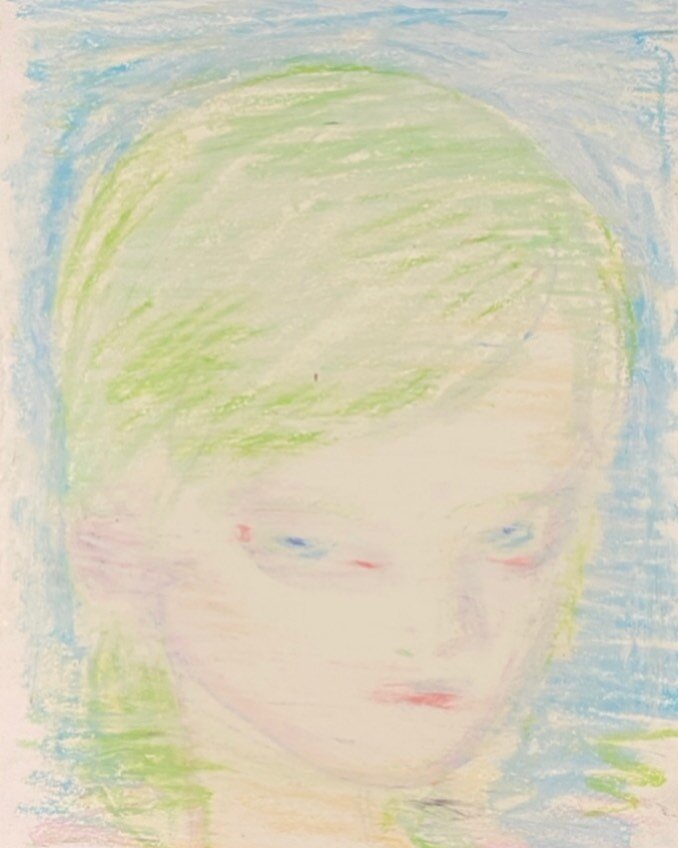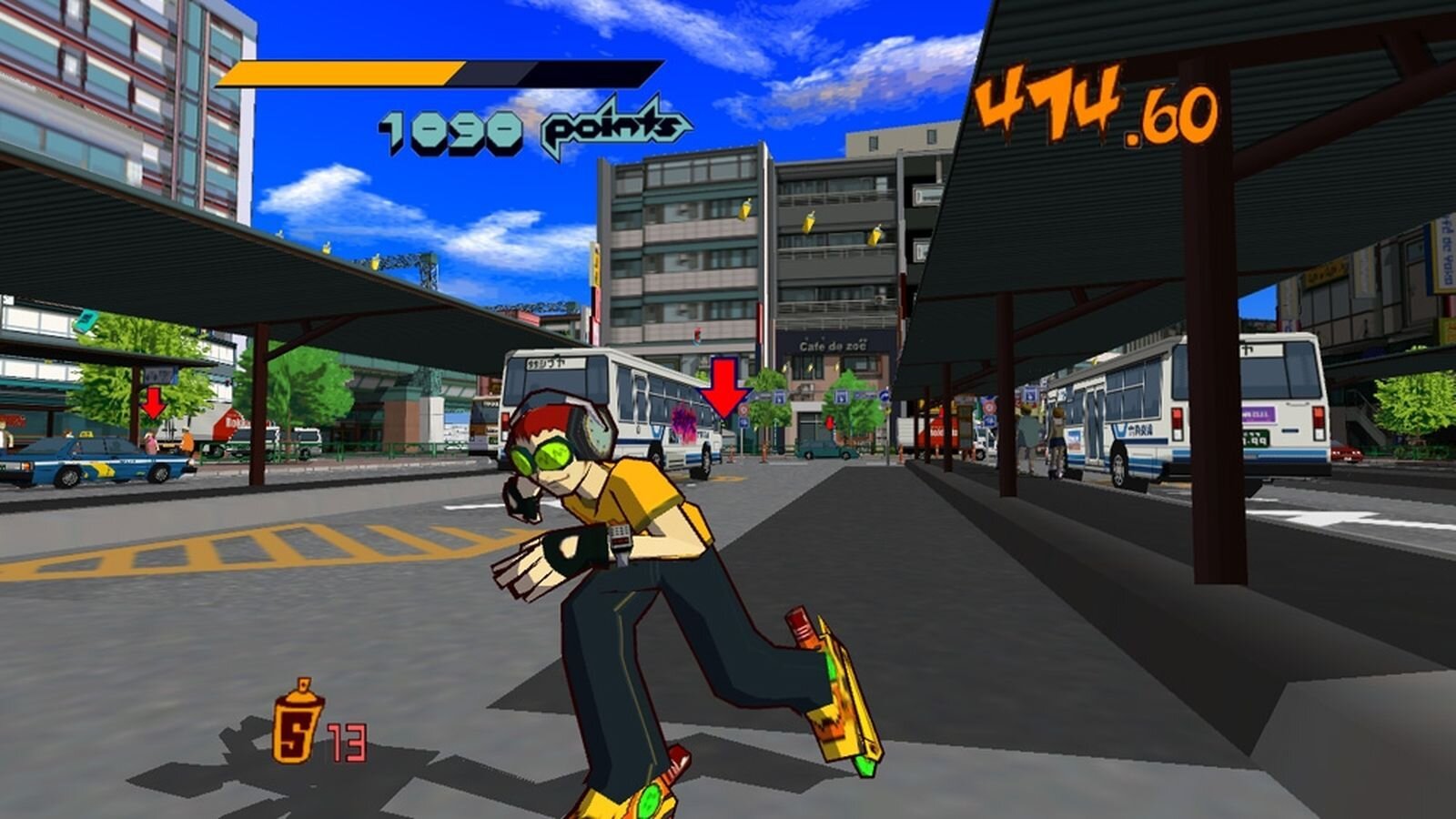YOSHITAKA AMANO & FINAL FANTASY: A LASTING LEGACY

For a franchise whose name implies finality, it’s ironic that Final Fantasy has become one of the longest-lasting and most successful video game series in history.
The series now boasts fifteen mainline instalments, with a sixteenth announced to be on the way. That’s not even counting the countless spin-offs and even a remake of the seventh game, which could be regarded as a mainline instalment itself. What began as Hironobu Sakaguchi’s [creator of the series] “Final Fantasy” before returning to university, has blossomed into a goliath of the gaming world. Anybody who has even a passing interest in games has likely heard of Final Fantasy, but delve a little deeper, and soon another name becomes very apparent in the folklore of the series’ history: Yoshitaka Amano.
Final Fantasy
However, before Amano’s contributions to the series can become clear, it’s important to understand the origins of the franchise as a whole. Originally developed and published by Square [who would later merge with Enix in 2003 to become Square Enix], the original Final Fantasy [1987] was pitched and realised by the aforementioned Sakaguchi, who, after working on various failures of games for the company, designed a new game called Fighting Fantasy. Sakaguchi was planning to return to university to focus on a career as a musician, and so as the story goes, the title of the game was changed to Final Fantasy to reflect Sakaguchi’s initial intentions. The game was a booming success, and paved the way forwards for the role-playing genre outside of tabletop games. Sakaguchi did not return to his musical ambitions, and the rest is history.
The series has constantly reinvented itself; it wouldn’t be where it is today if it doesn’t. Its origins in a traditional high-fantasy style, reflective of games such as Dungeons & Dragons, was completely upturned with the release of Final Fantasy VII in 1997. That game swapped out the European-inspired world of kingdoms and “dragoons”, which had mostly persisted until that point [although notably, FFVI did begin to incorporate some steampunk elements], for a dystopian cityscape of grey, smoke and corruption.
FFVII’s place in gaming history has long been cemented [the recent remake in 2020 confirms that], and the series continued with futurism and dystopia in the eighth instalment before harking back to the old high-fantasy days with FFIX. FFX saw a more spiritual take on the franchise, and not only the stylistic genre, but also the themes and ideas explored in each instalment have become increasingly varied; whilst still always feeling like a Final Fantasy game. Whilst FFVII explores the suffering of the natural world, usually caused by humanity’s actions, FFIX makes us ponder questions of existence, sentience and free-will. There are of course staple through-lines which run from game to game (here’s looking at you, Chocobos and Moogles).
And yet, it is not down solely to those adorable Chocobo birds and cuddly Moogles that we always know when we’re playing a Final Fantasy game, regardless of the often large stylistic and thematic differences between each instalment. There is the iconic battle victory theme, the near-certain inclusion of an oversized sword, and of course, the art of Final Fantasy.
Yoshitaka Amano
Anybody who has a vague familiarity with video games has seen the logo to a Final Fantasy game, they are always different, and yet always alike. These logos and much more are the works of Yoshitaka Amano. Each logo contains the iconic Final Fantasy branding accentuated by stunning artwork, always in Amano’s signature style; which reflects the characters or themes of the individual game. These logos have remained consistent from the first game through to today, always simple yet dreamlike, they ensure a stylistic uniformity for the franchise’s branding and promotion that has become deservedly iconic.
However Amano’s work on the franchise is not limited solely to its logos. Born in Shizuoka, Japan, Amano joined Square in 1987 as a conceptual artist for the original game. He worked on everything from character design to image and graphic design, as well as the logo. The success of Final Fantasy thrust Amano’s artwork into the limelight, suddenly his work was being seen by countless game enthusiasts.
However, as noted in the short documentary Yoshitaka Amano: his universe, on paper by Youtube Channel Archipel, fame has never been on Amano’s mind. The legendary artist explains his love for drawing, and that the process is “...not a pain for me, on the contrary it’s a pleasant process.”. He adds “For people to see and appreciate my work is a bonus.”. Amano paints the picture of a man motivated by his passions first, everything else is a bonus.
This becomes even more apparent by Amano’s presence on social media; his Instagram account is not verified, and certainly does not feel like that of a detached celebrity; Amano regularly posts about his work, usually with ordinary captions that reveal him to be simply another normal person, but a person with an intrinsic love for what he does. His social media presence feels more like that of somebody you could know personally, despite his fifty-thousand followers and countless more people having seen his work worldwide.
Amano’s role in the Final Fantasy franchise has been reduced following the release of Final Fantasy VI in 1994; he now contributes mostly through promotional imagery and of course, those enigmatic logos.
Yoshitaka Amano - Art
Nonetheless, Amano’s style has captured the hearts of many of those who have seen it. Influenced by early Western comic books, art nouveau, and Japan’s own ukiyo-e style; the images that Amano creates are wispy, dreamlike and floaty. There is a sense of ethereality and otherworldliness about them. These are images that could not exist within our reality, these are images that can only exist within a more magical realm. In the aforementioned documentary, Amano explains that he enjoys western fantasy and wanted to draw knights etc. Amano chose to focus upon single images and covers as this allowed him to “draw worlds that didn’t exist.”. Thanks in part to himself, these worlds now exist in the hearts and minds of countless people. It seems that Final Fantasy was a match made in heaven.
For some of Amano’s painted works, his use of watercolour no doubt enhances their dreamlike demeanour; his characters feel like they could fade away into the background of the painting, like they are more spiritual than solid. Likewise, the proportions of Amano’s characters are usually off; lending further to the feeling that we are viewing something from a dream; like a hazy recollection of something fantastical that we witnessed whilst sleeping soundly one night. This proportional peculiarity is likely inspired by the aforementioned ukiyo-e style, one of the most important of Japan’s traditional artistic styles. Whilst Amano’s style is much in a realm of its own, one can compare the ukiyo-e depictions of kabuki theatre actors, to that of Amano’s characters, and see some idiosyncratic similarities.
However, Amano’s Final Fantasy work is not entirely wispy watercolours. Take for example his illustration of Terra Branford from Final Fantasy VI, donning her magitek armour whilst looking out towards a bizarre medieval-steampunk backdrop. Terra almost evanesces into the white backdrop, her head and upper body is held from fading away only by a faint outline. Her delicate hair; also detailed only by its outline, floats like a cloud. And yet, her dreamlike being is held in place by the harsh solidity of her magitek armour. The armour’s lines are sharp, solid. Each individual cog and bolt is detailed, all is coloured in with a block darkness. Immediately, Amano draws a distinction between the character of Terra Branford and the world she inhabits.
Terra is half-Esper, a race of magical beings in the world of Final Fantasy VI. However, she is initially mind-controlled by the Gestahlian Empire who seek to take advantage of her innate magical ability in order to further their advancement of Magitek (technology fuelled by magic). Amano’s piece portrays this through line and colour alone. Terra is wispy, magical. Her magitek armour is solid, cold. She looks as though she may simply fade away, but her armour keeps her chained down. Immediately, without ever having played the game, we understand that Final Fantasy VI is a world not only of magical beings, but also of brutal industrialisation and the conflict that arises between them.
There is a clear albeit unique style to Amano. Whether he creates it traditionally or via. computer/digitally, it’s very easy to know when you’re seeing his work, and yet it’s also incredibly difficult to define it; there are influences, sure, but he belongs to no particular artistic movement. He, like the characters he depicts, belongs to his own magical world. It should come as no surprise then that the man himself is not sure what defines his style. In Yoshitaka Amano - his universe, on paper he states:
“Today, I still don’t know what my style is, nor what defines the ‘Amano’ touch. But I keep drawing what I like nevertheless. Perhaps this is what my style is.”
Perhaps only a man who is unsure of what defines his own style, can craft such indefinable works. His art is pure expression put to paper, that is all.
Conclusion
Whilst the final in-game world of a Final Fantasy entry is more solid than Amano’s dreamlike style, the worlds that we experience are nonetheless fundamentally shaped by his contributions. This is especially so for the first six games in the franchise, when Amano was still working in a larger role including character and image design amongst other areas. However, those early efforts are the pillars to shaping what Final Fantasy would become today, and so his contributions have had a seismic rippling effect. As was mentioned, Final Fantasy always feels like Final Fantasy, regardless of whether it’s from the 1990s, the 2010s or any other decade; they are always fantastical. Even when they take place in a dystopian cityscape, they feel fantastical. This, in part, can no doubt be traced back to Amano. His magical drawings can be felt in spirit all over every entry even when he wasn’t directly involved.
Video-games are inherently multi-faceted, but for a series to survive as long as Final Fantasy has, it must not only maintain quality but also identity. Amano is an integral piece to this identity. He continues to create promotional imagery and design the logos, providing a vital through-line for the franchise’s audience. Amano’s imagery connects those who played the original Final Fantasy in 1987, with those who play the games today. This helps the series to change as it needs or wants, whilst still remaining itself. Genres, themes, ideas, settings, all of that may change, but there is always that Final Fantasy magic whether you play the first game or the latest. Had Amano not been there from the beginning, who knows how that magic would feel, or if it would even be there at all.
This monolithic video game series was Hironobu Sakaguchi’s final fantasy, but it has helped consolidate Yoshitaka Amano’s lasting legacy.
Yoshitaka Amano’s Legacy
Yoshitaka Amano is a man who has a passion, and who follows and works on that passion constantly. Regardless of his work on Final Fantasy, he would likely be happy so long as he could continue to draw the things that he likes. It’s very rare that a person’s interests align with circumstance in the way that it has done for Amano. He is a man who simply wanted to draw magical worlds, and Final Fantasy afforded him the opportunity to do so. How many people see it is likely only a bonus, and yet countless people have now delved into the wonderful worlds of his work. Final Fantasy is a digital realisation of Amano’s pencils, paints and watercolours. His worlds are now perhaps more real than he ever could have imagined, for they exist in the hearts of the innumerable people who have played a Final Fantasy game. His work has reached beyond solely those with an interest in art, he now has a place cemented in the history of video games. This is something that many could only dream of, and yet there is a sense that this master artist would be content without it; so long as he could continue to follow his passion. Amano is an artistic soul through and through, and yet also a man who has left an indelible mark on the gaming world forever; a man who has connected older and younger generations to each other, a man who has depicted worlds that many of us could only dream of, and a man who has helped define one of the most successful video game franchises in history. Not bad for a man who simply wants to draw.
About the author:
Dominic Holm is a lover of all things Japanese. Originally being shown films by Yasuijirō Ozu, Masaki Kobayashi and Akira Kurosawa in film class has spiralled into a passion for everything from Japanese history to art, music to video games, Japanese language, tradition to modernity and more. He hopes his writing can help others to discover and share the culture he loves.

